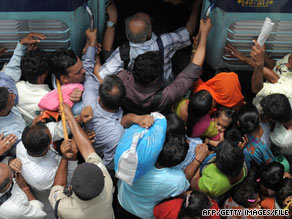Sampai saat ini penerapan teknologi dan inovasi masih perlu ditingkatkan. Bukan hanya di bidang teknologi tinggi, tetapi juga teknologi tepat guna.
"Kita harus lebih memperhatikan kegiatan research and development (R&D). Pada intinya bangsa ini membutuhkan banyak sekali perbaikan kemampuan teknologi dan inovasi," kata Rachmat Gobel, Direktur Utama PT Gobel International, dalam orasi ilmiah di Gedung Badan Pengkajian dan Penerapan Teknologi Jakarta (BPPT), Rabu (19/8).
Dalam kesempatan itu, Wakil Ketua Kadin Bidang Perindustrian, Riset dan Teknologi dianugerahi Gelar Perekayasa Utama Kehormatan oleh BPPT.
"Penghargaan ini dimaksudkan untuk mengapresiasi dan memotivasi perekayasa untuk bisa terus berkarya. Dikenal masyarakat luas dan di bidang perekayasa yang telah ditunjukkan dengan produknya. Tahun 2009 ini kita memilih Rachmat Gobel," ungkap Marzan Aziz Iskandar, Ketua BPPT.
Dalam orasi ilmiahnya, Rachmat mengangkat tema "Technovation: Meningkatkan Daya Saing Industri Nasional menuju Era Knowledge Based Competition".
"Technovation adalah upaya secara berkelanjutan dalam melakukan inovasi teknologi untuk meningkatkan kemampuan teknologi dan metoda kerja ke tingkat yang lebih tinggi, agar produk yang dihasilkan memberi nilai tambah yang tinggi bagi konsumen, agar produk yang dihasilkan selalu daya-saing," katanya, yang sejak 2008 menjadi komisaris di PT Indosat Tbk.
Menurutnya, technovation ini juga mengandung unsur kaizen, yakni upaya menyempurnakan pekerjaan yang menjadi tanggung jawab kita demi untuk sebuah kemajuan. "Dan inilah antara lain masalah besar yang dihadapi bangsa kita, yaitu kurang menuntut diri melakukan perbaikan dalam proses atau produksi," tutur Rachmat.
Kemudian ia memberi contoh teknologi produksi tempe. Kita mungkin adalah produsen tempe terbesar di dunia. Dan kebutuhan masyarakat juga besar. "Namun kita lihat, sampai saat ini boleh dikatakan tidak ada perubahan teknologi atau inovasi yang signifikan dalam proses pembuatannya," paparnya.
Untuk itu, lanjutnya, ia memikirkan ke depan perlunya menciptakan iklim yang kondusif bagi pengembangan teknologi, transfer teknologi, inovasi di sektor industri. "Kita perlu segera melakukan restrukturisasi dan reorientasi kebijakan pengembangan industri nasional agar lebih terarah sesuai dengan tuntutan persaingan usaha," harapnya.
Kompas

